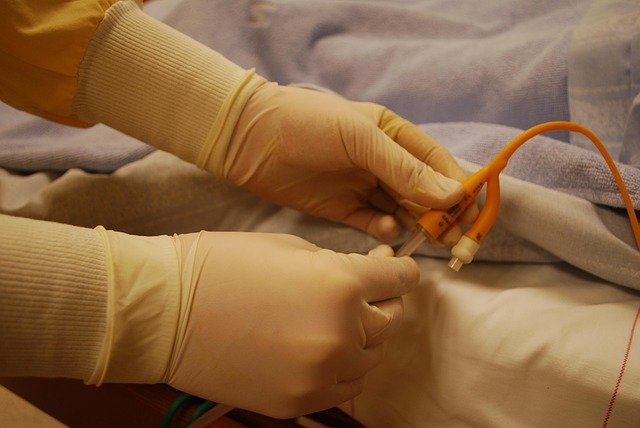Early Warning Signs and Treatment Options for Lung Cancer in the United States 2025
Lung cancer remains the leading cause of cancer deaths in the United States. Recognizing early symptoms—persistent cough, chest discomfort, coughing blood, or breathlessness—can enable timely diagnosis and improved outcomes. This article outlines common warning signs and treatment options to help readers seek care.

Understanding Early Warning Signs of Lung Cancer
Lung cancer often develops silently and may not produce symptoms until it advances, but some early signs can signal the presence of the disease. Awareness of these symptoms is particularly important for at-risk individuals in the United States to enable early detection and improve treatment outcomes.
Persistent Cough: The Most Frequent Early Symptom
One of the most common early warning signs is a cough that lingers for more than two to three weeks. This cough can be dry or produce mucus and often worsens over time. It might be tempting to dismiss it as a cold, allergy, or smoker’s cough, but persistent coughing warrants medical assessment, especially when accompanied by increasing mucus or blood-tinged sputum.
Chest Discomfort and Pain
Unlike the typical chest pain associated with heart issues, lung cancer-related chest discomfort usually feels like a dull ache, sharp pain, or pressure in the chest area. This discomfort often intensifies during deep breaths, coughing, or laughter. If this sensation is persistent or worsening, it is advisable to consult a healthcare professional for evaluation.
Blood in Cough (Hemoptysis)
Coughing up bright red or rust-colored blood is a serious warning sign. While not exclusive to lung cancer, hemoptysis indicates that tumors might be bleeding or invading blood vessels, necessitating urgent medical attention. Early evaluation in the United States can substantially impact treatment success.
Breathing Difficulties and Shortness of Breath
As tumors grow and obstruct airways, individuals may experience breathlessness, wheezing, or difficulty breathing even at rest (dyspnea). Additionally, lung cancer can cause pleural effusion—fluid accumulation around the lungs—that further hampers respiratory function. New or worsening breathing problems should prompt immediate medical consultation.
Unexplained Weight Loss
Unexpected weight loss of 10 pounds or more without dietary changes can indicate advanced lung cancer. This occurs due to systemic effects such as increased metabolism, appetite loss, and changes in taste or smell. Coupled with respiratory symptoms, unexplained weight loss is an important sign to discuss with a healthcare provider.
Screening for Lung Cancer: Early Detection in High-Risk Populations
In the United States, lung cancer screening is typically recommended for individuals at high risk, including long-term smokers or those exposed to other lung carcinogens. Low-dose computed tomography (CT) scans are the only screening method proven to reduce lung cancer mortality by detecting tumors before symptoms appear. Regular screening can lead to earlier diagnosis and improved survival rates.
Treatment Options for Lung Cancer in the United States
Lung cancer treatment is complex and personalized, taking into account the cancer type, stage, patient health, and genetic markers. As of 2025, a multidisciplinary approach involving oncologists, pulmonologists, surgeons, and radiologists is standard for optimal care.
Surgery: Curative Option for Early-Stage Lung Cancer
For early-stage lung cancers confined to specific lung areas, surgery offers the best chance for cure. Procedures vary from removing small lung portions (segmentectomy or wedge resection) to entire lung removal (lobectomy or pneumonectomy). Surgery often combines with chemotherapy afterward to reduce the risk of cancer recurrence.
Radiation Therapy
Radiation uses focused high-energy beams to destroy cancer cells and may be used alone or alongside other treatments. It can be curative for inoperable localized tumors or provide symptom relief for advanced disease.
Chemotherapy
Chemotherapy involves drugs that kill cancer cells throughout the body and is commonly employed in advanced stages or as an adjunct to surgery and radiation. It can help shrink tumors, control symptoms, and prolong survival but may have side effects that require management.
Targeted Therapy: Precision Medicine for Specific Genetic Mutations
Significant advances include drugs targeting molecular mutations in cancer cells. For example, therapies aimed at epidermal growth factor receptor (EGFR) mutations or anaplastic lymphoma kinase (ALK) rearrangements have dramatically improved outcomes for subsets of lung cancer patients. These treatments typically have fewer systemic side effects than chemotherapy.
Immunotherapy
Immunotherapy harnesses the body’s immune system to recognize and attack cancer cells more effectively. This modality has become a cornerstone for many patients with advanced or metastatic lung cancer and can lead to durable responses.
Palliative Care: Enhancing Quality of Life
Regardless of disease stage, palliative care focuses on managing symptoms and improving the patient’s quality of life. It can be combined with curative or life-prolonging treatments to address pain, breathing difficulties, and emotional support.
The Importance of Early Medical Consultation and Multidisciplinary Care
Prompt medical evaluation when experiencing symptoms like a persistent cough, chest discomfort, breathing changes, or unexplained weight loss is essential for early diagnosis. Lung cancer care in the United States involves a team of specialists who tailor treatment plans to individual patient needs, enhancing the chances of effective management.
Disclaimer: This article is intended for informational purposes only and does not replace professional medical advice. Treatment availability, protocols, and costs may vary by location and healthcare provider. Readers are encouraged to consult qualified healthcare professionals for personalized diagnosis and treatment recommendations.
Sources
- American Cancer Society. Signs and Symptoms of Lung Cancer. https://www.cancer.org/cancer/types/lung-cancer/detection-diagnosis-staging/signs-symptoms.html
- National Cancer Institute. Non-Small Cell Lung Cancer Treatment (PDQ®) – Health Professional Version. https://www.cancer.gov/types/lung/hp/non-small-cell-lung-treatment-pdq




